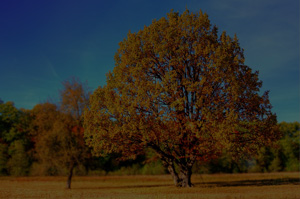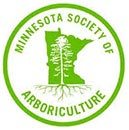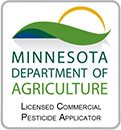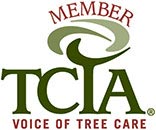Elm Trees
Elm trees are deciduous trees that originated in Asia about forty million years ago. There are over 30 species of elms, but there are only eight in North America. Elm trees have oval-shaped leaves with saw-toothed edges and are pointy at the end. The veins of the leaf are usually very visible too. The bark is rough with deep grooves. The structure of an elm tree is like an umbrella with wide spreading limbs and some drooping branches. Elm trees flower in the spring and then round flat seeds with a little hook fall afterward. Elms are located in places with sun or part shade and areas of moist soil.
The American elm tree was once one of America’s most common trees until Dutch elm disease wiped many out. Dutch elm disease is a fungal disease that grows in the tree's sapwood. This disease is hard to control because it can spread in underground roots and infect surrounding trees nearby. This can be a slow process of death by killing the tree branch by branch and can last several years.

Symptoms Your American Elm Tree May have Dutch Elm Disease:
-
Some leaves are wilting, yellowing, or browning in a season other than Fall. If the infection starts in the upper crown, you will see the end of individual branches being affected. This is called flagging.
-
If the infection starts towards the roots and the lower crown of the tree, symptoms can affect the whole tree faster.
-
Branches and stems affected will have dark streaks of discoloration in the bark. To find out, cut off a dying branch, cut deep into the wood to see the cross-section, and see if there are is any brown streaks in the wood.
-
Symptoms are usually observed in the early summer but can occur at any time.
-
The disease can also be spread by elm bark beetles tunneling into one tree then moving another. These beetles are attracted to sick or dying elm trees.
-
 A healthy and sick elm tree.
A healthy and sick elm tree.
To combat this disease, it is important that your neighborhood properly finds and removes any sick elm trees. Those with elms should also properly prune them and look into possible insecticides or fungicides to protect your trees. A local arborist can help you identify, heal, remove or protect your tree.
Ash Trees
There are several types of ash trees, including green, black, white, and blue. Green and white are most commonly found in the Midwest and all ash trees are vulnerable to pesky beetles. An ash tree has opposing branches, 5-11 leaflets on a leaf, and bark with diamond-shaped ridges. White and green ash trees also have thick, diamond-patterned bark. If this description fits and you have an ash tree, it is very important to keep an eye out for emerald ash borers in your area. Emerald ash borers, which are invasive beetles, are wiping out trees, causing many states to quarantine areas with infected trees.
These infectious beetles originated in Asia and have now spread to the U.S and are found in the upper Midwest. They are metallic emerald green and are only about half an inch long, so spotting them can be tricky. These pesky beetles are spreading quickly and are predicted to infest all unprotected trees in the U.S. and Canada in the next 20 years. How do they cause such destruction? They harm the ash trees by laying eggs on the bark. These eggs hatch into larvae that tunnel into the tree and consume its sapwood. This interrupts the tree's water flow, which dehydrates the tree and slowly kills it.

Whether your ash tree is healthy or not, it should still be treated and protected from the meddlesome emerald ash borer. It is hard to detect an early infestation, so it is better to be proactive.
Symptoms that your tree is infected include:
-
Early coloration in the fall
-
Branches coming out from the lower trunk
-
Woodpeckers
-
D-shaped exit holes
-
Branches dying from the top down
-
Sparse foliage
The quarantines mentioned earlier were implemented to prevent further spreading of emerald ash borers.
While websites advise using insecticides, they can be hazardous. Your city may have restrictions or guidelines on insecticides. Chopping your ash tree down Paul Bunyan style won't solve anything either. Your tree could be perfectly healthy or you could risk spreading borers when transporting the wood to the dump. Treating and protecting trees should be left to the pros.
Oak Trees
Oak trees are a favorite for landscaping, furniture, and flooring. They create a colorful display in the fall with red and brown leaves. There are many different types of oak trees: white, red, black, bur, and cherry bark, to name a few. An oak tree can be identified by its leaves. They are lobe or sinus-like, similar to the lobe shape of a brain. The ends of the lobes can be pointy or round. The bark of oak trees are hard and some sort of gray, with deep ridges. Oak trees can grow to be quite large, and they also produce acorns.
Oak trees can get common tree diseases like anthracnose, root rot, or leaf scorch. Oak wilt can kill your trees within the year they become infected. A good indication of oak wilt is if your leaves at the top turn brown but fall off with still some green color on the leaf. If your oak tree isn’t its normal beautiful green self, contact your local arborist right away.
Do you know what trees you have in your yard now? If you have any questions at all about your tree, never hesitate to call a local expert. They can tell you the specifics and give top-notch advice. Your trees are a vital part of your yard. Being proactive and detecting things early on will result in a very healthy tree.
Picture Credit:
Dutch elm disease: http://www.apsnet.org
Healthy vs sick ash tree:
http://www.richmondhill.ca/subpage.asp?pageid=emerald_ash_borer











